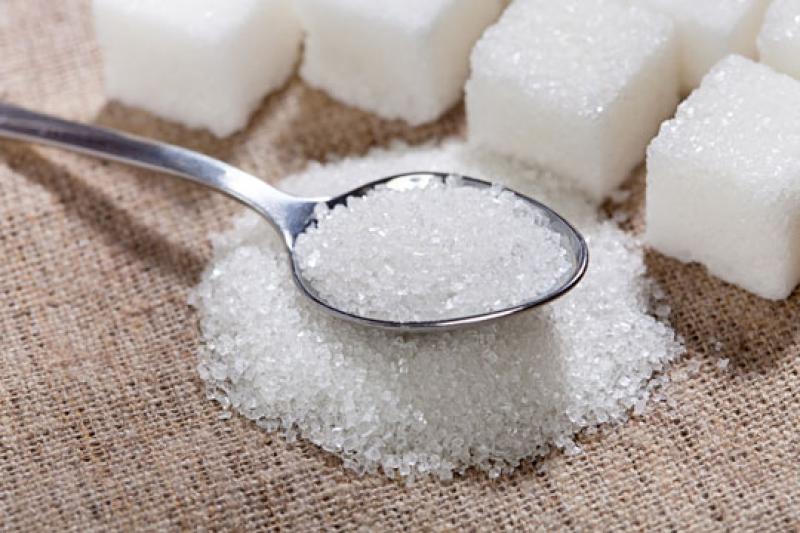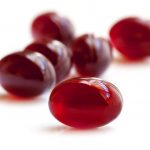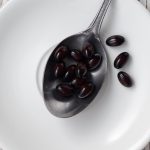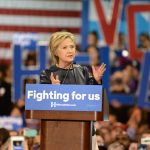Sugar

I’ll start with a quick history of sugar since it’s common use (overuse!) is relatively new. Refined crystalline sugar, as we know it today, was developed in ancient India around the 5th century AD. Widespread use of sugar started in Europe in the 19th century. Before that the main sweetener in Europe was bee honey.
Times have changed!!! Today per capita consumption in the USA is out of control between 30 kg (68 lbs.) to 50 kg (113 lbs.) per year, not counting artificial sweeteners. Worldwide sugar consumption is about 120 lbs. (53 kg.) per person per year and growing rapidly. I believe strongly that the average consumption in the USA and worldwide is alarmingly high leading to excess weight, metabolic syndrome, heart disease, tooth decay, hyperactivity in children, diabetes (indirectly) and a causal link to Alzheimer’s disease. Sugar is causing and/or contributing to a lot of problems!
There is also strong evidence that moderate to excess sugar intake can lead to dependency (addiction) much like that of opioid drugs, including phenomena like bingeing, craving and withdrawals.
Sugar consumption should be limited to no more than 5% of total energy calorie intake from all sources. More than 10% of total caloric intake of sugar will undoubtedly lead to negative health impacts.
The Big Lie #1; High Fructose Corn Syrup (HFCS) is Worse for You than Sugar (Sucrose), its Actually About the Same or Slightly Better.
Sugar intake more that 5% of your total calorie intake is bad for you no matter what form it is in: table sugar, high fructose corn syrup (HFCS), fruit, candy, cake, bread…you get the picture. The big lie is that sucrose is better for you than HFCS, and this is just plain ridiculous because sucrose is a readily digestible DISACARIDE, it is 50% fructose and 50% glucose, your body rapidly breaks it down naturally to these two sugars (monosaccharides) and does so with near 100% efficiency. A little more on HFCS can be found here on this FDA page. Actually there are two common grades of HFCS containing two monosaccharides both 45% pure fructose and 55% glucose or 55% pure fructose and 45% glucose compare this to 50% fructose and 50% glucose in “sugar, sucrose”. The rapid conversion of sucrose into the two monosaccharides in the gut takes place in minutes. HFCS contains small amounts of vitamins and minerals that are absent from refined sugar
The key to a healthy balance is to reduce consumption of any of these sugars below 10% of total caloric intake or optimally less than 5%.
Big Lie #2; Honey is better for you than Sugar or HFCS.
There is some truth to this but it is about quality not quantity.
Calorie for calorie, gram for gram, honey is worse for you than sugar. That is because honey is over 98% FRUCTOSE and contains essentially zero glucose, the sugar that your body runs on for most metabolic functions. Local raw unfiltered honey, in moderation, however, is good for you, not because of its fructose content, but because it contains pollen a natural antigen that boosts you adaptive immune system to fight flower pollen allergies. Recommendation: ½ teaspoon local unfiltered honey in your coffee or tea in the morning, but no more than that.
Sugar as a Spice:
Dark brown or Turbinado sugars are flavorful sweet sugars that have a powerful complex taste due to their molasses content. In my morning coffee I use about 1/5th of a packet of Hawaiian Turbinado sugar which delivers a wonderful flavor and distinct sweetness considering the quantity used.
You do not need to use a lot of sugar to achieve sweetness.
Titrate your sugar needs by starting with a partial teaspoon or fraction of a sugar packet rather than the amount pre-packaged or suggested by the sugar companies. Their business model requires them to force as much of this product down your throat as possible. Don’t fall for this. Train yourself to use less sugar and learn to appreciate the taste of lightly sugared deserts, iced teas and coffee. Baking recipes are also easily altered to contain less sugar than recommended.
Big Lie #3 Fruit is Good for you.
Fruit is probably not that good for you. For the vitamin and fiber content the vitamin to fructose ratio is too small to justify excessive consumption of fruit. Fruit contains way too much fructose and far too little vitamins and minerals. Almost all fruits contain a lot of fructose and in some cases such as apples and pears the ratio of Fructose to glucose is 2:1, or twice the ratio found in HFCS! Replace apples & pears with plums & apricots as a healthier alternative. The slogan “An apple a day keeps the doctor away” was created to increase the sale of apples to consumers. There is no scientific evidence to support this marketing slogan.
A note of caution on conventionally grown apples and pears: A fungicide DPA (diphenylamine) is allowed for use in the cultivation of apples and pears and not allowed in any other fruit or vegetable. This chemical has a checkered history and I suggest, if you really want to eat apples and pears, only consume organic varieties of these fruits.
The best dietary approach to fruit is to eat plenty of sweet delicious berries. Blackberries, strawberries, black and red currents, raspberries and blueberries, while containing some fructose, are also loaded with vitamins such as vitamin C and various anthocyanin water-soluble antioxidants. The vitamin and antioxidant to sugar ratio in berries is very favorable and extremely healthy compared to “fruit”.
My advice is to eat berries and avoid fruit. My favorite berries are blackberries followed by black currents. One hundred grams of blackberries (3.5 oz.) have only 43 calories, more dietary fiber than sugar, 25% RDI of Vitamin C and 19% of the RDI of vitamin K. Be sure to actually chew the seeds in the berries because they contain powerful antioxidants and omega-3 ALA an omega-3 (necessary for life). My favorite brand of berries is Driscoll’s, a family owned business that has developed cultivars of numerous berries with excellent taste and loaded with vitamins and essential nutrients. Equally important, this company has a farming and distribution system that is second to none in providing sustainable fresh berries to your home with excellent nutrient levels and taste.
Strawberries are another super food that is low in sugar but high in fiber. One hundred grams of fresh strawberries have only 33 calories and contain 70% of the RDI of vitamin C your body needs. Strawberries contain an unusually high amount of manganese, a necessary micro nutrient. Strawberries contain flavonoids, flavanols, anthocyanins and ellagic acids. Some people are allergic to strawberries sometimes resulting in an anaphylactic reaction.
Strawberry consumption has been associated with lower risk of cardiovascular disease, lowering LDL cholesterol and has also been associated with lower hypertension, inflammation, lower CLLI (Chronic Low Level Inflammation) and lower incidence of cancer. I believe that many of the health attributes of strawberries may be the result of eating something with a high vitamin and fiber density and low sugar content and thus avoiding the consumption of high sugar fruit or other sugar “health time bombs”.
I recommend Driscoll’s strawberries. I also recommend Plant City, Florida strawberries, a delicious cultivar with an unusually powerful flavor and sweetness.
Blueberries, while not as nutritious as blackberries or strawberries, are high in manganese and vitamin K. For 100 grams (3.5 oz.) of blueberries there are about 57 calories and 2.4 grams of dietary fiber, values not as well-proportioned compared to blackberries and strawberries. Blueberries have softer seeds compared to blackberries, making their “mouth feel” more pleasant. These berries also contain anthocyanin and polyphenol anti-oxidants. As before, blueberries are a good source of fiber and vitamin C without the high sugar load found in fruit.
Blueberries are an excellent addition to salads. I avoid “creamy” salad dressings loaded with emulsifiers. I prefer oil and vinegar homemade dressings. Simply take a handful of blueberries and slice each berry into two halves. Add one shot glass of vinegar one shot of RO water, a small sprinkle of Turbinado sugar, pepper and salt or Aromat™ Seasoning (Knorr), a little dill weed and basil (optional). Then add ½ shot of extra virgin olive oil and add the mixture to your salad and toss. Here the sugar acts like a spice not a sweetener.
Supplements:
There are some supplements that pack the nutrients of berries without eating the berries. The most obvious is blackcurrant extract from Europe or New Zealand. Tomato fruit is classified as a berry, but it is a true fruit. Since tomato fruit is very low in sugar, has great flavor raw or cooked and is high in vitamin C, it is considered healthy. However this fruit has a severe limitation due to its high oxalic acid content. Oxalic acid consumption without simultaneously taking calcium in cheese, will promote kidney stone formation. The carotenoid Lycopene is one of the only plant nutrients where it is far better taking the supplement than actually eating the tomato fruit.
Obviously Vitamin C supplements are an alternative to eating berries, but in this case vitamin C levels spike in the blood and are lost within hours, while eating berries insures a time release functionality. In addition, berries provide Vitamin K and anthocyanins, generally not found in supplements other than blackcurrant.
- Look for ways to cut your sugar intake. Your health will be the better for it.
- Let your eating be a part of the solution not a part of the problem.
- Be smart with consumption of all sugars including fruit.
- If you have any further questions, please ask me. It’s a dialog worth having.




0 Comments